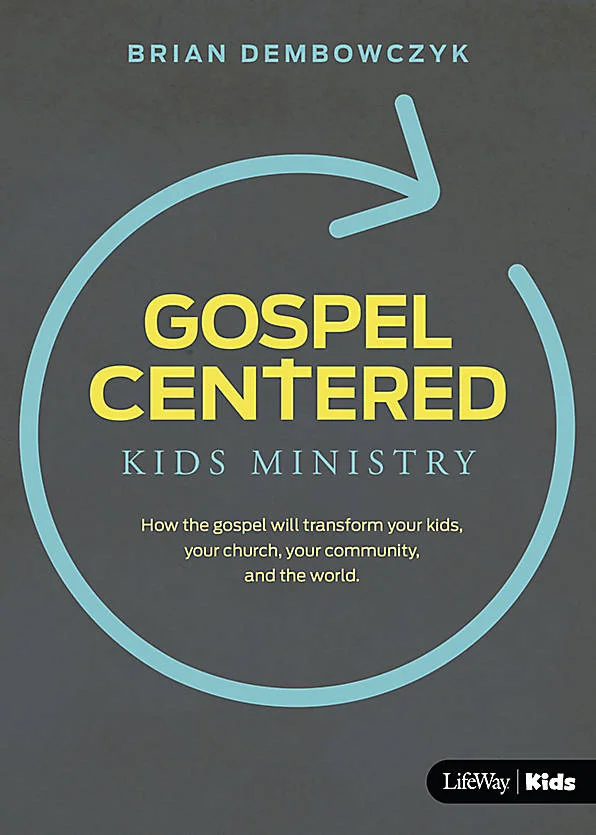Should My Child Get Baptized?
Many young parents have asked the question, “When is the best time to baptize my child?” It’s an important question, and it’s an important one for both parents and church leaders to be asking. If a child says they love and trust Jesus, we must take it at face value. We know that Jesus loves children and desires to save them (Matt. 19:14), so we should be eager to welcome kids to him and baptize them. At the same time, we don’t want kids to pursue baptism simply because their parents want them to be baptized. The church is responsible to baptize only believers, those whom God has saved and changed. So, as you, parents and church ministry leaders, consider whether or not the child in your care is ready, here are seven things to keep in mind:
1) Your first job is to clearly explain the gospel.
It’s really important that your family sits under biblically faithful, gospel-centered teaching week after week in your local church. It’s also important that you take time to clearly explain the gospel to your child as well. This may mean reading a Bible storybook to them a few times a week. But it also means having intentional times when you simply share the gospel and invite your child to respond by believing it and then obeying the Bible’s command to be baptized.
2) When you share the gospel, emphasize what Jesus has done.
Too often when sharing the gospel with children, we emphasize the ABCs: (A) Admit you are a sinner; (B) Believe in Jesus; and (C) Confess faith in him. There’s nothing wrong with this (see Romans 10:9-10) so long as we’re also clear that salvation is not about what the child does but about what Christ has done for them. If we only talk to kids about what they should do, we run the risk of confusing or discouraging them. When a child becomes aware of their sin, they may become introspective and worry, “Did I do enough? How can Jesus live in my heart when I still get so angry?” What Jesus has done for us through his cross and resurrection is the most important thing—so much more important than what we do. He saves us. We do not save ourselves. So, use a gospel presentation method that emphasizes Christ’s saving work; you might consider Billy Graham’s Steps to Peace With God or my own Are You Close to God? Then, teach kids to look away from themselves to the love and forgiveness that comes because “Christ loved me and gave himself for me” (Gal. 2:20).
3) Don’t be intimidated, because salvation belongs to the Lord.
I know many parents feel intimidated by these kinds of conversations. “How do I help my child understand things that are still a mystery to me?” Be encouraged. While you bear some responsibility to teach your children, God is ultimately the author of their faith (Jonah 2:9; Acts 17:26). As much as we may want to speed up their commitment, Jesus ultimately is the one who calls the shots. So, when the moment comes, say a quick prayer. Lean into the Lord and ask him for help, wisdom and discernment as you share the gospel with your child. And if you’re child is taking time to process, keep on being intentional. Invest the time to pray for, study, and sit with them. Your willingness to do so will help them see that their spiritual life and growth is a priority for you.
4) Look for a change of heart
After your child has made a confession of faith in Jesus Christ, look for a change in their heart. Does your child acknowledge and have a distaste for sin that was not there before their confession of faith? Is there a willingness to admit wrongs, apologize, ask for forgiveness, and forgive others when necessary? Is she showing a desire to pray and read her Bible? Does your child look forward to going to church and being with other believers? Conviction about sin, an increased desire to know God, and the practice of spiritual disciplines are all evidences of the Holy Spirit's work.
5) Work with the church to teach your kids the meaning of baptism.
When a child has begun to show an interest and desire to be baptized, dig a little deeper and ask, “Why do you want to be baptized?” Then, take that opportunity to teach them the meaning and right motivation for baptism. Baptism is a covenant sign that symbolizes our faith in Christ and our entrance into God’s family (Col. 2:11-12). Baptism is a picture of Christ’s death and resurrection (Rom. 6:3-11); It shows how our story is connected with Jesus’s story. Baptism is a symbol of cleansing from sin (Acts 22:16); It shows how our sins have been washed away. Baptism is an act of obedience both for the individual (Acts 2:38) and the church community (Matt. 28:18-20). So, the church and family should work together to teach kids these truths. Parents should look to the church to provide clear teaching on the gospel and baptism. They should also look to their pastors and church community for prayer and support as they seek to pass on these truths at home.
6) It’s okay if your child isn’t ready.
After teaching, don’t be discouraged if your child wants to take more time to process. That doesn’t mean that they aren’t saved or that they won’t be saved. Jesus didn’t identify his own faith as separate from his parents until the age of twelve, and he was not baptized until age thirty. Christians are saved by faith, not by baptism. Know and rely on the love that Christ has for you and for your child. And lean on your church leadership or other believers if you have questions about what to say and do next.
7) Finally, when the day comes, celebrate your child’s baptism with joy.
Once you begin planning your child’s baptism, focus on helping them celebrate it with joy. Invite friends and family to be there to celebrate this day with you. It is a day that should be cherished. And don’t forget that this day is also an opportunity to share the good news of your testimony with others. Baptism is a public expression of our faith. So, convey to your children that their baptism may be used by Jesus to save others.
Any time a child is baptized, there are varying emotions—joy, excitement, and gratitude. It’s a great privilege to teach our children about Jesus, see them come to faith, and participate in their baptism. But don’t just cherish the day of baptism; cherish the entire process.





We must intentionally share the gospel with our kids and invite them to respond by believing it.